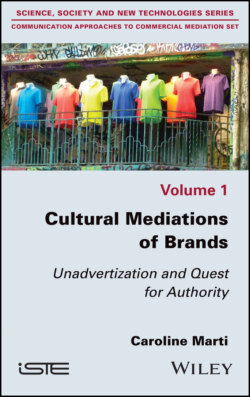Читать книгу Cultural Mediations of Brands - Caroline Marti - Страница 15
I.3.2. Denunciation of a communication to be rebuilt
ОглавлениеThe announced new communication is characterized by the horizontality of exchanges between producers and consumers; this communicative ideal recalls the symmetrical relationships depicted by the authors of the Palo Alto school (Watzlawick 1979). It opposes the so-called “vertical” communication considered undesirable, which is outdated by virtue of the ability of individuals to thwart manipulative injunctions and their desire to be considered as individuals in their own right and not as common targets.
The awareness of the misdeeds of communication practiced until then tends to apprehend it as vulgar, in the double meaning of too widespread, but also gross and lacking elevation.
It is this communication, practiced for years without ethics and discernment, that Laurent Habib, an experienced professional and former boss of Euro-RSCG, denounces, calling for a renewal (Habib 2010). Before stating his somewhat awaited proposal for a cure, he makes an interesting observation because he constitutes a kind of mea culpa of the profession with a diatribe on communication that would have gone astray by serving interests without believing in them or by serving questionable interests without ethics. The collapse of communication credit would thus have contributed to the crisis of widespread mistrust affecting society as a whole and to the weakening of authority figures, particularly in the media, politics, business, and brands.
Overall, in professional speeches, traditional advertising certainly appears necessary and unavoidable, but emblematic of an old, less efficient, and less effective means of communication than the possibilities of communicating otherwise.
In this great maelstrom, the strategies of the market players are quickly identified and described as petty. The de-compartmentalization of communication, which had hitherto been divided into “institutional communication”, “corporate communication”, and “commercial communication”, intended for different audiences (public actors, journalists, customers, and potential customers), has led to a breakthrough in interpretation: the euphoric communication of a particular brand does not exclude questionable internal behavior. Or, the values claimed from customers can take on a new face with pressure on financial results via wage bill cuts revealed in the press.
This unveiling of the behind-the-scenes of the lives of brand management companies connotes their speeches and discredits their intentions. The transaction is taboo in the minds of professionals, as revealed by the euphemism and growing sensitivity of marketing vocabulary. “Clubs”, “loyalty”, “love brands”, “friends” or “fans”, “members”, “followers”, and other socio-affective metaphors seem to want to make people forget the martial or commercial terms, “targets” and “clients” promising a less Venusian relationship. Seduction is the pursuit of conquest by other means.
In this context, professionals’ circumvention strategies seem logical and even inevitable. Taking into account the public and publics implies, for each brand, thwarting a supposedly degraded reception of messages in order to better adapt and adjust a predetermined form of communication as favorable. Finally, it is a metadiscursive point of view on communication that has been played out intensely for several years and is helping to transform the representations of commercial mediation.
This brief summary is not intended to lead to an exhaustive review of all the initiatives that aspire to rebuild communication and that rely on the findings to propose revised or innovative forms of communication. But it allows brands’ cultural initiatives to be placed in this overall context.
My aim is to show how, in a particular social context, representations about what consumers are and what communication should be, lead to the implementation of communication mechanisms that are supposed to enable brands to develop their influence.
